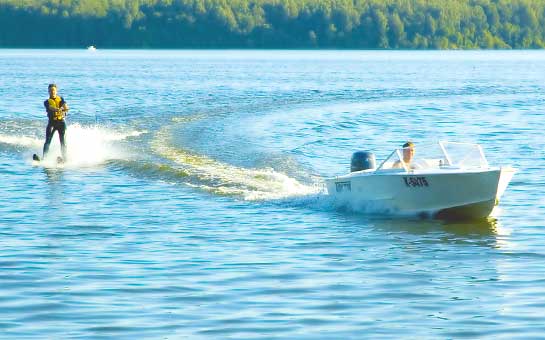Water skiing is one of the most longstanding and popular extreme water sports. It draws everyone from adventure tourists to families enjoying a day out on the lake. Of course, as with any hazardous sport, there is always the risk of some unexpected accident or injury. However, fear of accidents should not deter you from participating in and enjoying this sport. If you have any plans to go water skiing on vacation, just make sure you purchase travel insurance for water skiing before your trip.
Travel Insurance for Water Skiing
As soon as you book your trip, you should plan an itinerary for the activities you will indulge in. If water skiing is on the list, look for water skiing travel insurance. Your regular travel insurance may cover some outdoor sports, but it usually does not cover the risks of more hazardous sports—for example, water skiing. Even if your travel insurance policy of choice includes water sports, you should check with the insurance company to explicitly confirm that water skiing is included.
In the scenario of an accident or an injury, the cost of medical treatment and care would almost certainly ruin your vacation. A tourist often finds these expenses astronomical in addition to the effort of recovery and the journey back. You can avoid these anguishes by purchasing water skiing travel insurance beforehand.
A good water-skiing travel insurance plan will cover the following:
- Overseas medical and hospitalization expenses
- Evacuation and repatriation for medical causes
- Partial coverage for permanent disability
- Accidental death and dismemberment (AD&D)
Introduction to Water Skiing
Basic water skiing, as the name suggests, involves being towed behind a boat and skimming the surface on water skis. Water skiing can be so much more, though. There are various techniques to suit your preferences, such as barefoot water skiing, freestyle jumping, and ski racing. There is even a water-skiing option for the physically disabled.
The equipment varies according to the technique you plan to try. The bare minimum consists of a large body of water, skis, and a boat. Ski vests or life jackets are a must—except in barefoot skiing, when it’s better to wear a wetsuit. Various types of skis include finless skis, freeboard skis, single skis, and double skis. Remember: The higher your body weight, the longer your skis should be in order to maintain balance.
Risks of Water Skiing
Water skiing is a stimulating and invigorating water activity. However, it can also be dangerous if you aren’t careful. Risk factors here could include:
- Environmental: Weather, water conditions, water temperature, and obstacles
- Equipment: The conditions of the cable, skis, and flotation devices
- Fitness: Correct length of ski for the skier’s weight, understanding of balance and posture
- Preparedness: Ailments and other physical conditions, alcohol consumption, previous experience, and ability
Water-skiing-related injuries could occur to the head, face, back, torso, upper extremities, and lower extremities. As it is a water sport, there is also the ever-present risk of drowning. About one-third of reported water-skiing injuries happen to the lower body parts—that is, the knees, calves, and ankles.
Head injuries range from gashes to concussions. There is also the chance of shoulder dislocations, sprains, and fractures. The torso is similarly susceptible to contusions and lower-back pain. Injuries can also occur when high-speed falls force water into various body cavities (for example, ears, nose, or mouth), causing perforations and internal damage. The most common skiing-related injuries are ankle sprains and ligament tears.
As you can see, the need may indeed arise for water skiing travel insurance.
Do your research, and choose wisely before purchasing the right travel insurance for your trip.
